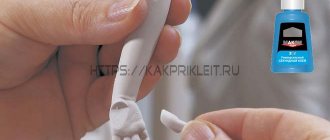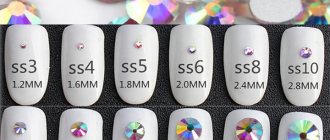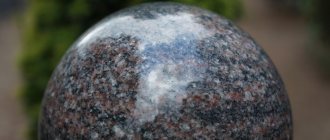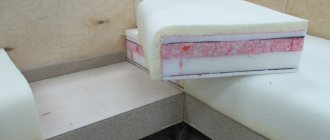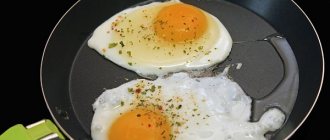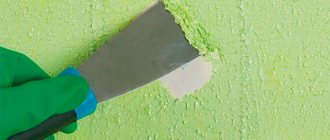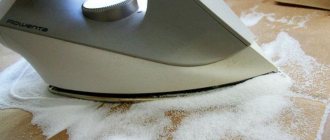Finishing a house with materials of natural origin has always looked more aesthetically pleasing, rich and original. Natural sources are not restored, the cladding often has significant weight, so manufacturers offer a wide range of products that imitate rocks. What is it, how is it installed, what kind of glue is needed for decorative stone?
Decorative finishing with artificial stone Source stroyka-gid.ru
Scope of application
Much in the choice depends on how the operation will proceed in the future. For example, additional elements to increase adhesion are relevant in the case of porous coatings or fresh concrete. Additional reinforcements can be dispensed with when it comes to bases with high-quality processing and preliminary application of plaster.
Quartz sand goes better with cork bases, which have some unevenness.
Novice craftsmen will be able to quickly master mixtures with their own hands that can harden as quickly as possible and then be stored for a long time in a diluted form. The polyurethane base or epoxy resin is resistant to moisture. Glue for decorative gypsum stone with such a base can be used even in the bathroom.
Manufacturers
Let's look at the main manufacturers of adhesives for decorative stones.
- PLUSFIX. One of the most inexpensive options, as it is cement mixed with sand. It can only be applied to concrete and brick walls. It is also only suitable for small tiles (with sides less than twenty-five centimeters).
- PERFLIX is a more preferable option, since the adhesive is made from gypsum and special additives that increase its elasticity and drying speed. The prepared solution must be used within half an hour. Glue is sold in bags weighing thirty kilograms. And this amount will require fifteen liters of water.
- Satyn PKG-28 is a better option for those who are laying tiles for the first time. Due to the addition of special substances, the glue is very plastic. And the solution remains useful longer than the remedy described above - as much as fifty minutes. Sold in bags weighing twenty-five kilograms.
- Gypsum is another mixture of gypsum and minerals. The finished solution should be used within half an hour, and it dries on the wall faster than the previously listed products - within a day. A package weighing thirty kilograms will require approximately eighteen liters of water.
Suitable bases
When choosing adhesive for the walls of an apartment, you need to take into account not only the tile itself and its characteristics, but also the base on which it is glued. Although improved adhesion becomes an important indicator in any case. You just need to figure out in advance how to glue gypsum tiles.
Unplastered brick
Experts in practice say that it is possible to lay tiles on brick walls without plaster. But such work always has its own nuances. Not everyone will take such details into account on their own. Only professionals will tell you what to glue decorative gypsum stone to and how to work with the compounds.
It is optimal when such coatings are initially smooth. If not, the existing problems are corrected with glue. Repairs can become expensive, and the consumption of adhesive mixtures can increase significantly. And some products shrink. Because of this, the coating itself becomes uneven after some time; you have to redo a lot of things and waste time to properly lay the gypsum tiles under the brick again.
Or materials of white and other colors are prepared in advance for further use, with which plaster and primer help. Then all that remains is to lay the tiles under the brick itself, using a small amount of material. This is a cheap and accessible solution for everyone. But even under other circumstances, anyone can figure out how to glue gypsum tiles.
Plastered surfaces
Before laying plaster in this case, it is necessary to check the old material and its strength. If the old base easily separates on its own and begins to delaminate, it is better to get rid of it. The main thing is to figure out in advance how to glue decorative stone from gypsum.
There are several options for plaster that can be combined with tiles:
- Plaster.
- Limestone.
- Cement.
The first options are considered the most flexible and simplest for further work. If their layer is up to 5 centimeters, it is better to refuse to use reinforcing mesh.
Selection options
To correctly select the appropriate adhesive, you need to focus not only on quality and cost parameters, but also on a number of other parameters:
- The type of base in which the entire spectrum will rotate, and its characteristic irregularities, such as deviations in vertical or horizontal lines. In order for the surface to be uniform in thickness, different amounts of glue will have to be used for different elements;
- Tile type. Determination of the level of its hygroscopic properties. For example, with a solid granite package with a low degree of hygroscopicity, it is better to avoid using adhesives with a high water content, otherwise this will complicate the evaporation of the liquid, which will reduce the reliability of the joint between the lining and the base. As tilers say in such cases, the glue under the tile “sours”;
- Tile sizes. Taking this parameter into account allows you to accurately determine the glue consumption;
- Tile surface. When laying tiles in the kitchen or in a room equipped with electric-heat floor systems, it is necessary to use adhesive as quickly as possible.
Under the influence of temperature fluctuations, the glue can shrink or expand, which is fraught with the most negative consequences.
Types of glue
In most cases, decorative gypsum tiles for interior decoration are small plates that retain a textured surface and a smooth back side. It is on this that the mixture is applied. To glue and organize installation, different types of compositions are used.
Alabaster mixtures
These are dry types of compositions that contain plasticizers and alabaster. They are diluted with the addition of a certain amount of water. A liquid nail will not require this.
Sometimes quartz sand is added to make production cheaper. But because of this, adhesion deteriorates, so purchasing such materials is not recommended.
The minimum pot life of the glue is half an hour. It is better to give preference to quick setting. Then you won’t have to hold the elements on the surface with your own hands for a long time in order to reliably glue the gypsum stone.
To dilute high-quality glue, you need to take at least 300 milliliters of liquid per kilogram of dry powder. It is recommended to study the instructions in advance. Otherwise, there will be too little alabaster, which will cause the adhesive properties to deteriorate.
Liquid Nails
You can also glue gypsum stone onto them without worrying about adhesion. But there are different types.
- With neoprene.
Toxic material that emits an unpleasant odor. But it can fix gypsum cladding on any type of base. The main thing when working is to protect the respiratory system and organize timely ventilation of the room. Laying out the first corner will not be difficult.
- With acrylic copolymers or polyurethanes.
In this case, the toxicity of the composition is minimized, and there is no specific odor. An excellent option if you need to mount porous materials. Moisture resistance is low; such compositions do not tolerate low temperatures. This must be taken into account when laying gypsum bricks.
What kind of plaster is needed?
You can use any brand of building gypsum. There are expensive brands of gypsum, and there are cheap ones - what's the difference?
Gypsum Magma G6 B3
On the plaster bag it is usually written, for example, “gypsum g-16” or “gypsum g-6”. The number means the hardness of the gypsum after drying, g-16 is a very strong gypsum, products made from it are more difficult to break than, for example, from g-6. If you are planning to make a stone for yourself (not for sale), then use the cheapest gypsum, yes, products made from it will not be as strong, but the gypsum is cheap and once you glue the stone to the wall, you will not break it.
If mass production for sale is planned, then it is better to use gypsum of a higher strength to make the stone stronger. The fact is that a stone can break during transportation, and imagine a situation where you made a delivery, the buyer checks the goods, and there are a lot of broken tiles.
For sale, some stone makers use cheap gypsum, adding various plasticizers and additives, such as SVV-500, to increase its strength. You can read about this here.
I also want to say about the color of the plaster. At first I used Samara gypsum g-16, the tiles turned out gray after drying. Now I use Magma G6 B3 (molding), after drying the color of the tiles is white. I like working with Magma, it is finely ground gypsum, hardens a little slower and costs 3 times less than Samara g-16.
How to glue gypsum tiles?
For work, choose a seamless or suture method. Usually they repeat the pattern of brick walls, or offset the rows by half or a third of the tiles. Sometimes the laying of gypsum stone and other materials is created in the form of a spiral or diagonal lines.
Tools and materials
The list of necessary devices is not so long that you need to stack materials on top of each other:
- Paint or varnish, including those used to process seams.
- Tile adhesive.
- Primer with sufficiently deep penetration.
- Tooth type spatulas, made of rubber or metal.
- A miter box along with a fine-toothed file and a hacksaw for metal processing.
- Rollers and brushes, wide and with natural wax, column type. Which variety is needed in a particular case is chosen individually.
- Pencils.
- Marking cords.
- Vertical plumbs with building levels and tape measures for gypsum products.
How to treat after installation?
The entire surface is coated twice with a hydrophobic composition after the installation of adhesives and other materials is completed. As a result, the porosity of the material decreases, and you don’t have to worry about the appearance of mold and fungi. Gypsum brick is no exception.
Such elements can be coated with other compounds to improve the initial characteristics:
- Yacht varnish. One of the most durable protective coatings. But it requires certain skills when applied and can take a long time to dry.
- Varnish with acrylic base. It is characterized by increased moisture resistance, including gypsum-based ones.
- Oil varnish. Manufacturers produce it in different shades.
Application of a protective composition
Even before varnishing or painting the stone, you need to impregnate it with a special hydrophobic agent. It is required to reduce hygroscopicity, prevent moisture saturation, and reduce the risk of mold growth. Stores sell ready-made liquid formulations or concentrates that you need to dilute with your own hands. The following are considered good impregnations for decorative stone:
- "Optimist S405";
- White Hill;
- "Tiprom" and others.
Application of the solution does not lead to the appearance of a film that could interfere with the vapor permeability of the surface. The product penetrates 10–15 mm into the plaster, which prevents its damage when applying paint. It is usually recommended to apply 2-3 layers of protective agent one after another, without waiting for the previous one to dry completely. The easiest way to work is with a spray gun, but you can use a regular roller.
What else can you pay attention to?
When choosing a good glue, it is important to look at the quality characteristics.
- Consumption. Directly related to the size of the plates, the larger or smaller width of the teeth and the condition of the surface. The average figure in most cases is 3-4 kilograms per 1 meter.
- Setting time and adhesion. Here it is important to rely on the characteristics of specific premises. We put everything according to the instructions.
- Cooking time, which differs in the adhesive mixture. While it is not over, the stain can still be corrected even after being applied to the wall.
- The time interval during which the glue retains its properties without hardening. Usually indicate 10-15 minutes. Sometimes special ingredients are added to basic materials to slow down this process. But it is not recommended to do this if there is no need. Otherwise, you won’t be able to fit anything.
- Slip resistance.
There are compositions for external and internal use, combined with dry and wet areas. The official instructions from the manufacturers will tell you how to place the material in a particular case.
Some varieties have additional characteristics. For example, protection from humidity and temperature changes, elasticity. Such materials can withstand increased loads. A correctly laid wall will not be damaged by anything for a long time.
For stoves and fireplaces, another group is often chosen - special heat-resistant adhesives. They can equally resist the low and high temperatures with which the wall interacts.
Reactive mixtures are often considered the most convenient and versatile for practical use. These are products not only with an adhesive base, but also with hardeners in the composition.
The main thing is to work as quickly as possible before everything dries out. At the same time, high elasticity is maintained, even if there are many irregularities on the surface. As a result, the apartment will look beautiful.
The use of so-called wallpaper compositions is also allowed. The setting time in this case depends on the number of main components; the more there are, the longer the process takes. Including when they do everything with their own hands, as expected.
Advantages and disadvantages of decorative stone
White or colored stone is a beautiful, original material that looks great in any interior. It has a lot of advantages:
- a variety of options, the ability to be used in almost any room, while creating original designs;
- beautiful imitation of the structure of natural stone;
- pleasant tactile texture;
- ease of operation, no need for special knowledge;
- light weight of the stone, no additional load on the walls or ceiling;
- opportunity to save (compared to the price of natural material);
- favorable microclimate in a room with such finishing, environmental friendliness;
- strength, durability of the material, resistance to deformation;
- resistance to temperature changes;
- suitability of most adhesives for installation.
Artificial stone has few disadvantages. It requires careful preparation of the surface - otherwise differences, holes, potholes and defects will not allow you to create a truly high-quality coating. Some types of gypsum stone react poorly to the influence of moisture and are destroyed by physical impact. If an element is dropped or hit, it most often breaks, so care must be taken. Also, inexpensive brands of stone are prone to fading; any artificial material fades with constant exposure to sunlight.

